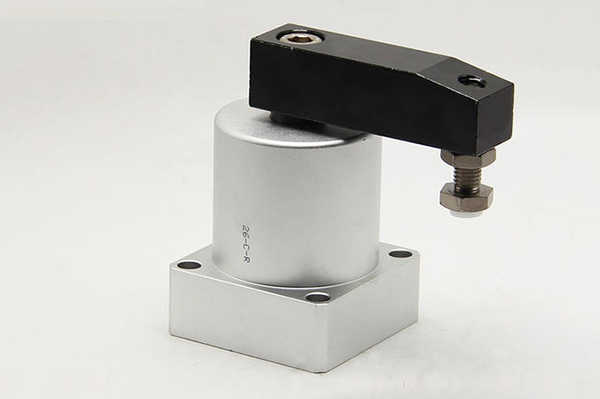1. Preselect the size of the cylinder based on the torque exerted on the angle cylinder;
2. Determine the operating pressure of the corner cylinder;
3. Calculate the theoretical output moment;
4. Calculate To determine the air consumption of the corner cylinder, correctly select the charging and deflating circuit;
The above four steps can be completed by cylinder related technicians when you make technical selection.

Angle cylinder operating characteristics:
1. The theoretical output torque is proportional to the operating pressure.
2. Environment and medium temperature: 0~60℃ for rack and pinion type, 5~60℃ for blade type.
3. Swing time: refers to the time required to swing at a certain angle. If the swing time is too long, it means that the swing speed is too slow and crawling will occur. If the swing time is too short, the linear speed of the outer edge of the blade is too high, the seal will heat up greatly, abnormal wear will occur, and the life of the cylinder will be reduced.
4. Adjustment of swing speed: exhaust throttling method can be used.
5. Allowable energy: refers to the inertial energy that the cylinder shaft can withstand. Inertial energy is not only related to the mass and swing time of the load,
It also depends on the shape and installation method of the load. Although the cylinder shaft is made of chromium-molybdenum steel and has been heat-treated to have sufficient strength, overload can still cause failures such as shaft breakage.
Notes on the use of corner cylinders:
1. When adjusting the angle under the condition of air supply pressure, ensure that the device is within the rotation angle range, the load will not fall, and the adjustment will not exceed the rotation angle range.
2. Do not rotate the angle adjustment screw beyond the adjustment range to prevent it from falling off and causing personal or device damage.
3. Reprocessing of the product (such as enlarging the fixed orifice in the piping interface, etc.) is not allowed.
4. The shaft joint used should have a degree of freedom to avoid unevenness caused by eccentricity.
5. The external limiter should be installed away from the rotary axis. If it is too close to the rotary axis, it will swingThe reaction of the torque generated by the cylinder acting on the limiter Force is added to the rotary shaft, which may cause damage to the rotary shaft or bearings.






 WhatsApp: +8615857777578
WhatsApp: +8615857777578